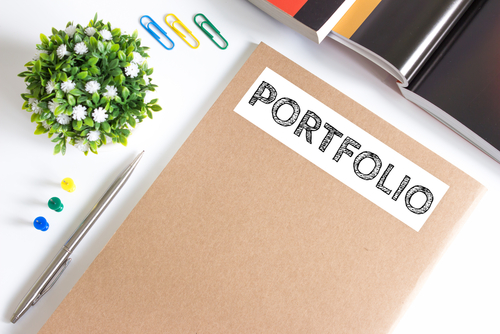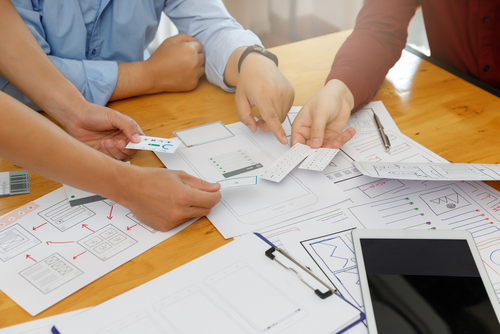How Do I Manage My Design Projects?

Graphic design project management is never simple. Failure to properly manage design projects will result in late, poor quality, or unsatisfactory work. Before starting any project, the project manager and designers should plan and document every stage of every design project. First, the conceptual stage involves creating the main idea and central theme for the ad or campaign. Once the designers choose the general message and layout, they will have a basic idea of the look and feel of the future piece. Second, they should conceptualize the project by adding details, such as fonts, colors, images, and headlines.
Designers need to identify and document the main risks in the project. They also need to find a balance between the risk factors and the rewards, create the appropriate metrics, and make sure everything is successfully implemented.
Design projects bring together the creative and business components of your business. Designers need to use their imagination, creativity, strategic planning skills, and technology expertise to deliver the best product possible. Here are some things designers should know if they want to take advantage of their skills and knowledge in this area.
Graphic Design Project Management from Start to Finish
All designers who want to succeed in the creative industry need to stay organized. Being organized may seem like common sense. Yet, many designers often forget to keep their design documents updated and organized so that the ideas they come up with during the process can be brought to fruition on time. Unorganized designers may miss deadlines, upset their clients, do not get referrals, and lose business.
Identify Key Concepts
During the first stage, designers should determine the level of creativity required by deciding if the project is traditionally conceptual or innovatively ground-breaking. Knowing the required creativity level will allow designers to focus their energy and talents on producing optimal pieces. A creative brief should document each project. This documentation should include the basic ideas, drawings, and storyboards.
Designers should have a clear picture of their customer’s requirements before starting on a design project. They should create a questionnaire that asks their customers what they expect from them, what makes a good user experience, and other relevant questions for the project.
This questionnaire will help the designers to understand the key risks involved in such a project. These risks include dealing with delays and unforeseen circumstances, understanding the legal risks, managing the budget, and user acceptance. Once the designers have a clear picture of what they will need to address, they will know how to identify and minimize these risks.
For each project, the design team should finalize one or two concepts that meet the needs of the client and promotes action from the target audience. Staying as objective and organized as possible will help the designers concentrate on what the piece is supposed to achieve and avoid wasting time on speculative design features. Failure to organize and document the concepts will result in the designer becoming stuck and wasting valuable time and resources.
The Creative Brief
The creative brief provides designers with an overview of a project. This brief can provide designers with all the background information they need to complete a project. The design team should review the creative brief with the client and get their approval before proceeding with the project.
The creative brief keeps the designers organized so they can put different aspects of the project into action at the appropriate times. This brief creates a template that each designer on the team must follow for the successful production of the project. The creative brief also helps the project manager to supervise the tasks of each team member and guide them through the process. Every team member will know what is happening with the project from the development phase to final production.
Designers should also use the creative brief to stay updated on the materials to be used in the project. Designers who are not informed about the latest graphic design materials run the risk of creating a product that is not up to the client’s standards, missing deadlines, and damaging the company’s reputation. The creative brief should list all the latest materials required for the project. This information should be shared with the other team members regularly in-person, through social networking sites, or discussion platforms.
The Role of a Project Manager
A dedicated project manager is responsible for issues that may arise during the project’s duration. Their role is necessary for all collaborative design projects. The project manager should oversee every single activity and provide feedback to every member of the team. They can delegate various tasks to different team members based on their skill level, expertise, and nature of the design project.
The project manager should ensure that they assign all tasks to those involved in the project. Plus, the project manager should define the design team’s reporting system, self-management of different tasks, and risk management roles. Defining these roles will help the project manager address key risks involved in the design project when they occur.
Identify Requirements and Milestones
It is important to identify the project’s overall requirements and translate them to actionable design objectives. This is especially important when it comes to design teams because different individuals must share the same goals to combine their skills and achieve common objectives. For a designer who works alone, aligning the customer’s requirements with design duties will allow the designer to break down the project into measurable tasks in similar stages. This means the designer can focus on similar tasks, such as selecting colors, for multiple client projects at the same time.
Next, use the basic principle of project management and define the project’s critical milestones. Identifying the key achievements of the project will allow the design team to create a standard life cycle. As a result, they will be able to accurately provide progress reports to clients.
At the end of each stage, the project manager should have the design team perform a quick evaluation and re-examine every deliverable aspect of the project. This evaluation acts as a quality control check and ensures the product will meet the project specifications.
Minimize Risks
Communication is necessary to minimize risks for graphic design projects to be successful. Every member of the design team must understand the goals of the project and work together to reach those goals. Designers should know all the details about the graphic design projects, understand the objectives, know the timelines, and have the required materials ready for use.
The project manager should discuss their expectations with the staff and provide them with feedback each step of the way. Team members who are not clear about the expectations of the project should ask for clarification. Every participant needs to understand all their responsibilities for the project.
The project manager must be available to answer questions and give advice to the team when they need it. Managing a project has plenty of challenges. Questions that may arise during the project should be answered quickly and professionally. The project manager should provide team members with timely answers and solutions to keep the project moving in the right direction.
The design team may need the training to ensure effective communication. The project manager cannot assign team members specific tasks and assume they will know what to do. This assumption can create serious risks that can lead to serious mistakes. The project manager should develop new approaches and techniques to effectively communicate what they expect from each team member. They should train team members to recognize when to make the necessary modifications and when to follow up when certain tasks are completed.
Simultaneously working on time-sensitive and challenging assignments is hard for anyone. The role of the project manager is to help guide the design team to foresee and minimize risks with corrective actions. By maintaining open communication, designers can prevent problems or manage them better. Designers can also identify and understand the potential project risks during the planning stage. For example, scope creep is what project managers say happens when too many new elements are added to a project, but no consideration is given to adjusting priorities, deadlines, and budgets.
To better manage time and goals, the project manager and team members should use a day planner to schedule tasks according to priority and level of urgency. Schedule blocks of time for creativity, productivity, and communication. Take the first 10 to 20 minutes of every morning to plan the day’s tasks. Never start the day until this is complete. At the end of every workday, be sure to review accomplishments, upcoming deadlines, and opportunities for improvement.
Encouraging Creativity
It is a surprise to many people that creativity can be a challenging aspect of managing a graphic design project. The work environment that graphic designers are in requires them to follow the directions and requests of the client, use certain words and formats, and do many other things according to the specific rules of the assignment.
Creative people who are used to creating artistic works their way may find this difficult. Clients and graphic designers can often conflict with what the client wants and what the graphic designer feels will work best. It is the responsibility of the project manager to set boundaries for the design team. Yet, the project manager should not micromanage the team. They need to let the design team operate within the boundaries of the project so they can do the best job for the client.
The client will start with a product or service they want to promote. When the client brings their ideas to the graphic design firm, the design team can start developing ideas for marketing materials that highlight the product or service. At this stage, the project manager keeps the creative team on task and makes sure they follow the guidelines for the project. The client should be involved in every step of this process to ensure they like how their project is developing.
The project manager can help with the creative process by assigning each member of the team with a specific role that they specialize in. Assigning team members with specific roles can help them feel they are having a meaningful impact on the project and its overall success.
On larger projects, the project manager can assign a couple of team members as assistant project managers. They must have the right skill set, knowledge, and some experience managing other projects. The project manager may also need to decide to keep some team members and let other team members work on another project that suits their skill set.
Outsourcing Design Projects
There may be a time when the project manager needs to outsource the graphic design project to another firm. Hiring freelance graphic designers at another company allow the original company to focus on their core business doing the design work they prefer to do.
The original project manager needs to communicate with the freelance design team. They need to be aware of what the client requires and the deadlines for the project. The freelance graphic design team needs to communicate with the original project manager to let them know about the overall progress of the project and if they are keeping track of the deadlines.
When Problems Occur
The graphic design team might need to deal with a big mishap while completing the project. These mishaps can turn into a disaster if proper protocols and management procedures are not followed. The responsibility of the project manager is to ensure that these types of mishaps do not occur and to follow the proper protocols and procedures when problems do occur. The project manager should have an experienced team that is familiar with quality control procedures.
When the Project is Completed
The project manager needs to continue communicating with team members after the project is completed. The project manager should review the entire process with the team to find out what worked, what did not work and to discuss how things can be better on future projects. When the project manager keeps the communication lines open, team members will feel comfortable contacting the project manager on other projects.
Project managers and graphic designers can successfully manage and complete design projects by following these procedures. The project manager needs to have a clear vision of how the results of the project should look and plan each step of the project. Planning will help keep the team focused on the project to produce a product the client will like. The design team can complete their work on time when they stay organized, communicate, and follow procedures to finish the project.
Related Resources:


